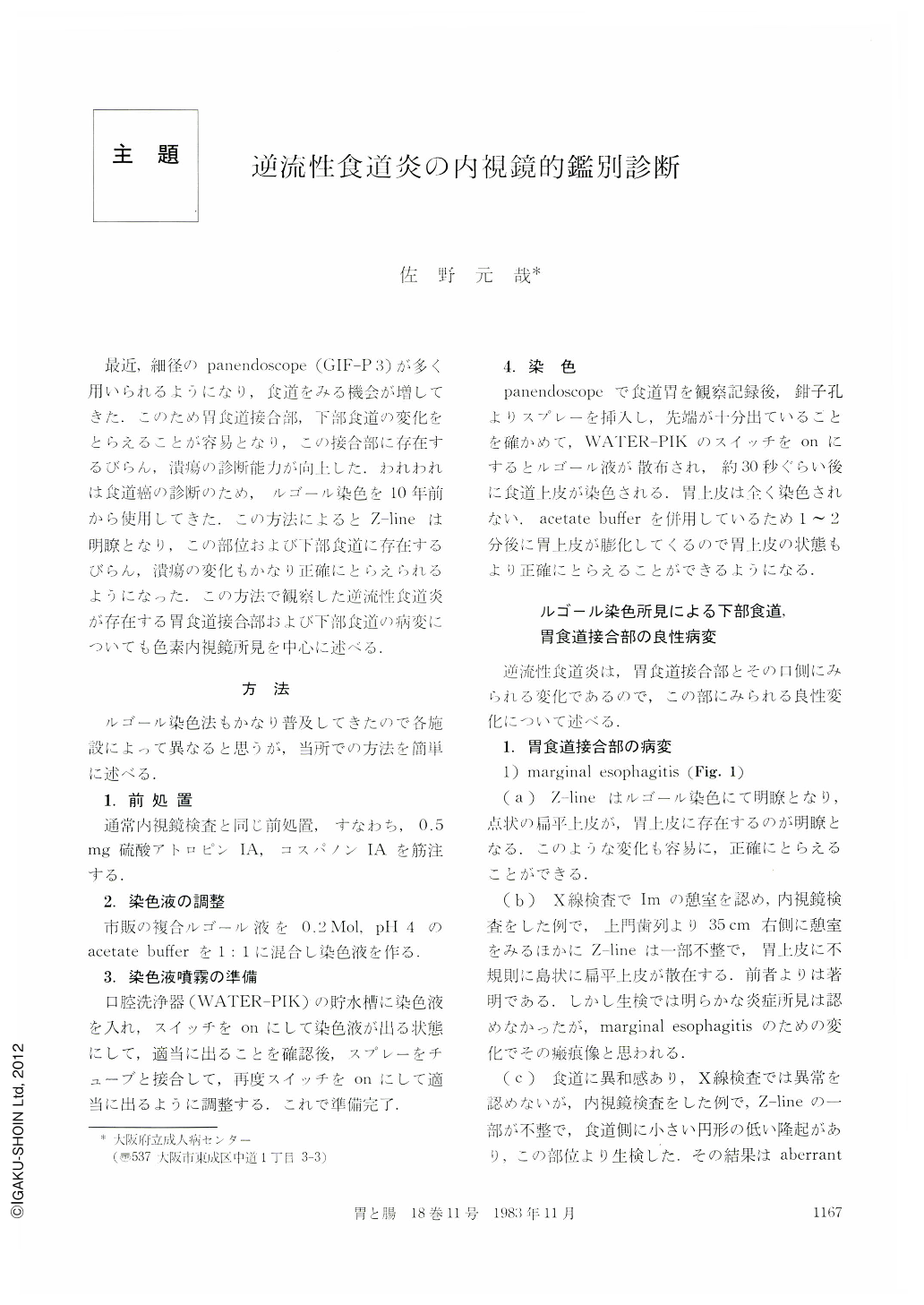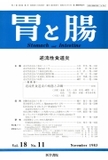Japanese
English
- 有料閲覧
- Abstract 文献概要
- 1ページ目 Look Inside
最近,細径のpanendoscope(GIF-P3)が多く用いられるようになり,食道をみる機会が増してきた.このため胃食道接合部,下部食道の変化をとらえることが容易となり,この接合部に存在するびらん,潰瘍の診断能力が向上した.われわれは食道癌の診断のため,ルゴール染色を10年前から使用してきた.この方法によるとZ-lineは明瞭となり,この部位および下部食道に存在するびらん,潰瘍の変化もかなり正確にとらえられるようになった.この方法で観察した逆流性食道炎が存在する胃食道接合部および下部食道の病変についても色素内視鏡所見を中心に述べる.
方 法
ルゴール染色法もかなり普及してきたので各施設によって異なると思うが,当所での方法を簡単に述べる.
Popularization of panendoscopy increased an opportunity to examine G-E junction and the esophagus, furthermore endoscopic dye-method made us easier to recognize Z-line and improved a diagnostic ability of the lesions around the G-E junction. These advancement improved to detect lesions around the G-E junction and current disease ratio between the G-E junction and lower esophagus is 98 to 87. Considerable lesions can not be diagnosed as reflux esophagitis and it is necessary to conbine several tests such as esophageal manometry, pH monitoring, gastrin tolerance test and acid perfusion test to define their causes.
Regarding differential diagnosis of the lower esophageal lesions, gastric carcinoma and esophageal carcinoma are most important and should not be missed. Incidence of these lesions are low but the gastric carcinoma became easily diagnosed by acetilation method because it induces swelling of gastric epithelium and makes its recognition easier. It is also rare to have localized squamous cell carcinoma around the Z-line but it could be diagnosed by endoscopic Lugol-staining method even if routine endoscopy shows no significant abnormalities.

Copyright © 1983, Igaku-Shoin Ltd. All rights reserved.


